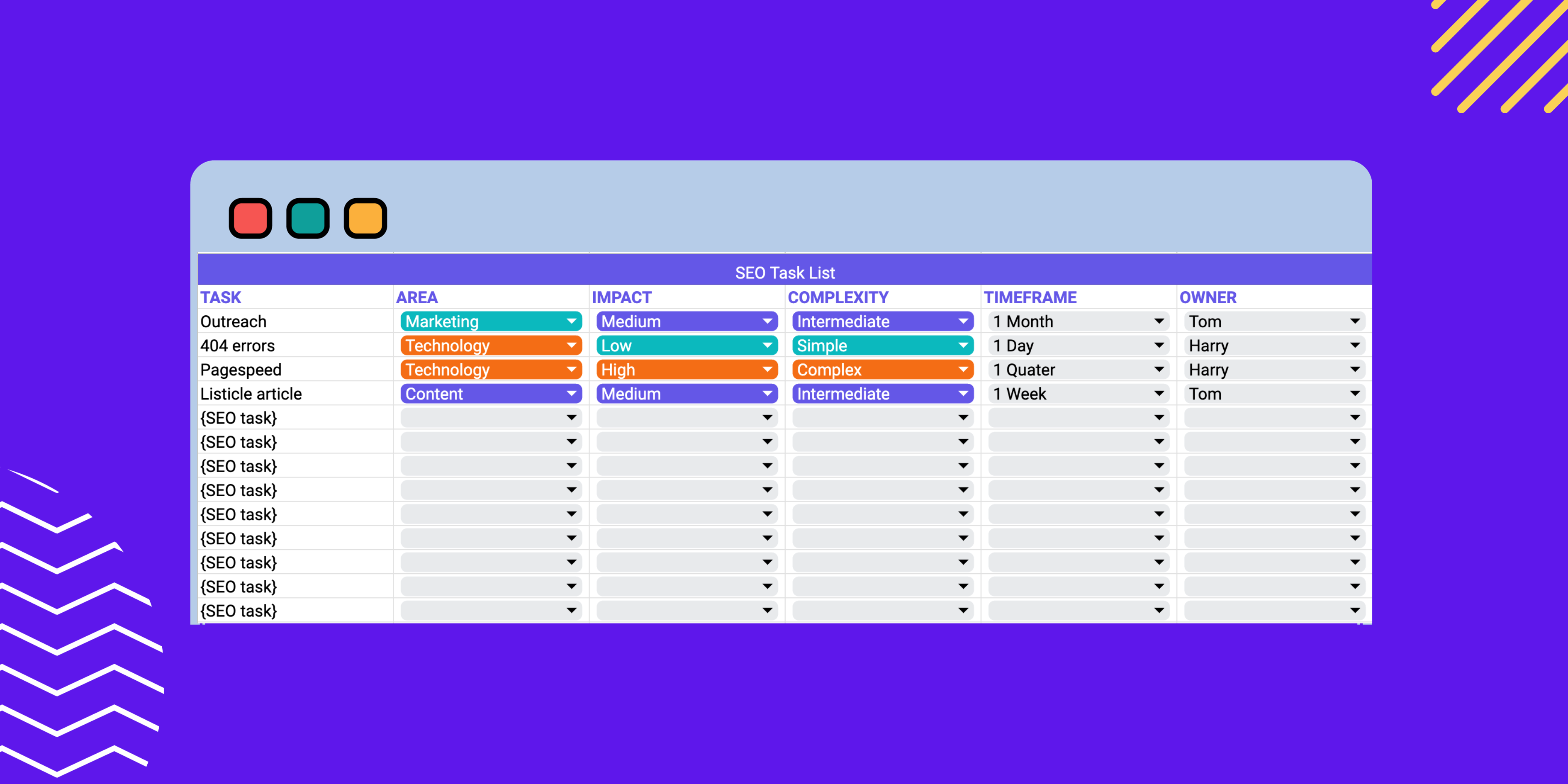Hey there! Today, I want to talk about something that’s been on my mind – SEO tasks. With over 13 years in the SEO world, I’ve seen some common SEO blunders that just keep coming up.
Because Google changes the rules constantly, and businesses are realising that having a solid SEO strategy isn’t a luxury; it’s a necessity, keeping up-to-date with the SEO tasks is more important than ever.
But here’s the thing – SEO can be a mouth full when trying to tackle it ad-hoc or without any frameworks in the background. That’s where prioritising SEO tasks will turn a full SEO strategy into bite size pieces.
What are Key Steps to Prioritising SEO Tasks for Your Business?
Let’s dive in. First, open a new spreadsheet, or click on the banner below to get a copy of my SEO Task Spreadsheet, then let’s break it down:
1. Create a Task List:
Start by listing every SEO task, even if it seems completed. You can’t prioritise if you don’t know what’s on your plate. Start with big tasks, like link cleanup, content revamp, and design tweaks. Then, dive into the details, like A/B testing headlines or fine-tuning multimedia content. Get your team involved because brainstorming is where ideas flow.
2. Categorise SEO Tasks by Impact:
Now, categorise the SEO tasks as high, medium, or low impact. It’s like sorting your spices for a recipe. Breaking it down simplifies prioritisation.
EXPERT TIP: As an SEO Consultant, I often see SEO tasks given the wrong impact category. By keeping up-to-date with the latest SEO trends and Google algorithm updates, I can help you ensure your SEO tasks have the right priority category.
3. Sort Complexity and Resources:
Consider the resources and complexity for each SEO task. Some need more effort, while others are quick and easy wins. For example, expanding your blog might require more writers and SEO content management systems, while fixing broken links is a quicker fix.
4. Assign Responsibility:
Who will handle each SEO task? Your marketing team will do most, but tech or design teams might step in. Assign tasks strategically to streamline work.
5. Assign A Timeframe:
Some SEO tasks can be completed in a day, others might be a long-term project that needs Web Development or management approval. Some SEO tasks might also need to be actioned weekly, such as SEO content creation, whereas some projects might be a one-off, such as setting up Google Search Console. By adding a timeframe, each assigned owner will gain a holistic view of their requirements.
6. Analyse and Prioritise:
Now, analyse the data and create a prioritised list. Ideally, have lists for each department (i.e Content, Design and Tech), so everyone’s on the same page. Group high, medium, and low impact tasks and prioritise.
7. Repeat and Rinse:
SEO keeps evolving. Google changes, new tools emerge, and your site’s performance shifts. Reevaluate and reprioritise every month, like giving your SEO strategy a tune-up. With your spreadsheet, it’s a breeze.
So, there you have it – a glimpse into how I, as a SEO Consultant, handle some of my SEO tasks. It’s about staying ahead of the game because in the digital world, adaptation is key. If you need help developing your SEO strategy, or guidance each month around what SEO elements and tasks we should be focusing on, feel free to reach out! I’m here to help you navigate the intricacies of SEO, so you make fewer SEO mistakes and progress your strategy faster.



